Martin Tomlinson - Error-Correction Coding and Decoding: Bounds, Codes, Decoders, Analysis and Applications
Here you can read online Martin Tomlinson - Error-Correction Coding and Decoding: Bounds, Codes, Decoders, Analysis and Applications full text of the book (entire story) in english for free. Download pdf and epub, get meaning, cover and reviews about this ebook. year: 2017, publisher: Springer International Publishing, genre: Home and family. Description of the work, (preface) as well as reviews are available. Best literature library LitArk.com created for fans of good reading and offers a wide selection of genres:
Romance novel
Science fiction
Adventure
Detective
Science
History
Home and family
Prose
Art
Politics
Computer
Non-fiction
Religion
Business
Children
Humor
Choose a favorite category and find really read worthwhile books. Enjoy immersion in the world of imagination, feel the emotions of the characters or learn something new for yourself, make an fascinating discovery.
- Book:Error-Correction Coding and Decoding: Bounds, Codes, Decoders, Analysis and Applications
- Author:
- Publisher:Springer International Publishing
- Genre:
- Year:2017
- Rating:3 / 5
- Favourites:Add to favourites
- Your mark:
Error-Correction Coding and Decoding: Bounds, Codes, Decoders, Analysis and Applications: summary, description and annotation
We offer to read an annotation, description, summary or preface (depends on what the author of the book "Error-Correction Coding and Decoding: Bounds, Codes, Decoders, Analysis and Applications" wrote himself). If you haven't found the necessary information about the book — write in the comments, we will try to find it.
Part I is concerned with the theoretical performance attainable by using error correcting codes to achieve communications efficiency in digital communications systems.
Part II explores the construction of error-correcting codes and explains the different families of codes and how they are designed. Techniques are described for producing the very best codes.
Part III addresses the analysis of low-density parity-check (LDPC) codes, primarily to calculate their stopping sets and low-weight codeword spectrum which determines the performance of these codes.
Part IV deals with decoders designed to realize optimum performance.
Part V describes applications which include combined error correction and detection, public key cryptography using Goppa codes, correcting errors in passwords and watermarking.
This book is a valuable resource for anyone interested in error-correcting codes and their applications, ranging from non-experts to professionals at the forefront of research in their field.
This book is open access under a CC BY 4.0 license.
Martin Tomlinson: author's other books
Who wrote Error-Correction Coding and Decoding: Bounds, Codes, Decoders, Analysis and Applications? Find out the surname, the name of the author of the book and a list of all author's works by series.

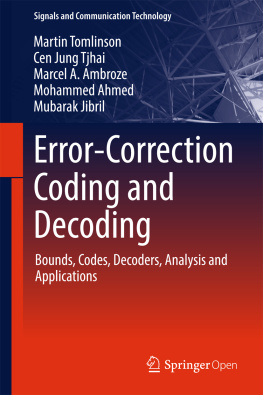

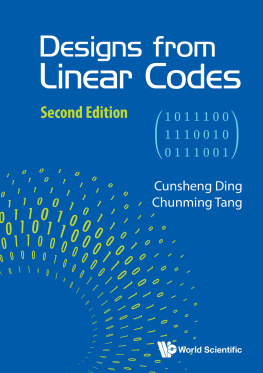

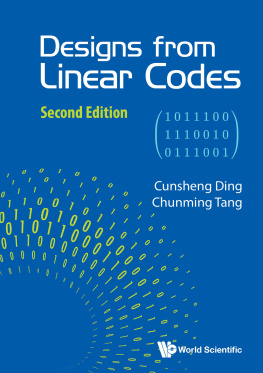

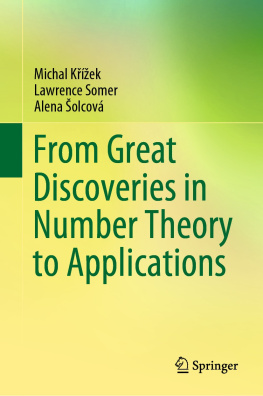

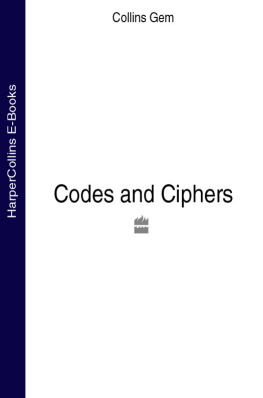
 possible binary combinations for each codeword which in terms of the n -dimensional signal space hypercube corresponds to one vertex taken from
possible binary combinations for each codeword which in terms of the n -dimensional signal space hypercube corresponds to one vertex taken from  possible vertices. There are
possible vertices. There are  codewords, and therefore
codewords, and therefore  different possible random codes. The receiver is considered to be composed of
different possible random codes. The receiver is considered to be composed of  matched filters, one for each codeword and a decoder error occurs if any of the matched filter receivers has a larger output than the matched filter receiver corresponding to the transmitted codeword. Consider this matched filter receiver and another different matched filter receiver, and assume that the two codewords differ in d bit positions. The Hamming distance between the two codewords is d . The energy per transmitted bit is
matched filters, one for each codeword and a decoder error occurs if any of the matched filter receivers has a larger output than the matched filter receiver corresponding to the transmitted codeword. Consider this matched filter receiver and another different matched filter receiver, and assume that the two codewords differ in d bit positions. The Hamming distance between the two codewords is d . The energy per transmitted bit is  , where
, where  is the energy per information bit. The noise variance per matched filtered received bit,
is the energy per information bit. The noise variance per matched filtered received bit,  , where
, where  is the single sided noise spectral density. In the absence of noise, the output of the matched filter receiver for the transmitted codeword is
is the single sided noise spectral density. In the absence of noise, the output of the matched filter receiver for the transmitted codeword is  and the output of the other codeword matched filter receiver is
and the output of the other codeword matched filter receiver is  . The noise voltage at the output of the matched filter receiver for the transmitted codeword is denoted as
. The noise voltage at the output of the matched filter receiver for the transmitted codeword is denoted as  , and the noise voltage at the output of the other matched filter receiver will be
, and the noise voltage at the output of the other matched filter receiver will be  . The common noise voltage
. The common noise voltage  arises from correlation of the bits common to both codewords with the received noise and the noise voltages
arises from correlation of the bits common to both codewords with the received noise and the noise voltages  and
and  arise, respectively, from correlation of the other d bits with the received noise. A decoder error occurs if
arise, respectively, from correlation of the other d bits with the received noise. A decoder error occurs if 
 .
. is
is  and as the noise is Gaussian distributed, the probability of decoder error,
and as the noise is Gaussian distributed, the probability of decoder error,  , is given by
, is given by 


 codewords may also cause a decoder error but the weight distribution of the code
codewords may also cause a decoder error but the weight distribution of the code  is usually unknown. However by averaging over all possible random codes, knowledge of the weight distribution of a particular code is not required. The probability of two codewords of a randomly chosen code
is usually unknown. However by averaging over all possible random codes, knowledge of the weight distribution of a particular code is not required. The probability of two codewords of a randomly chosen code  , differing in d bit positions,
, differing in d bit positions,  is given by the binomial distribution
is given by the binomial distribution 